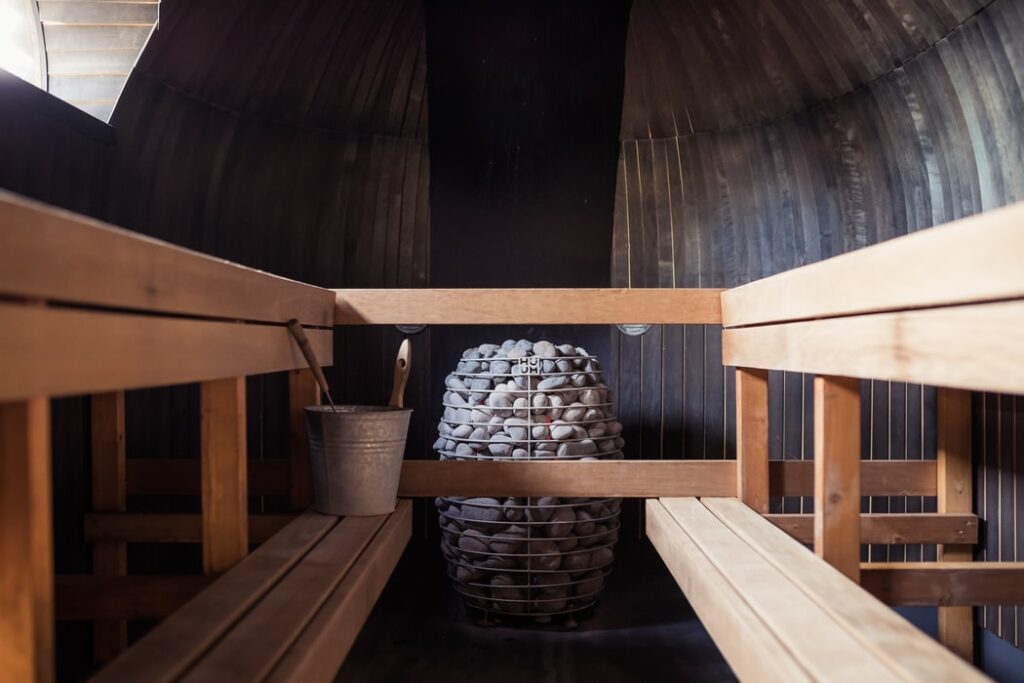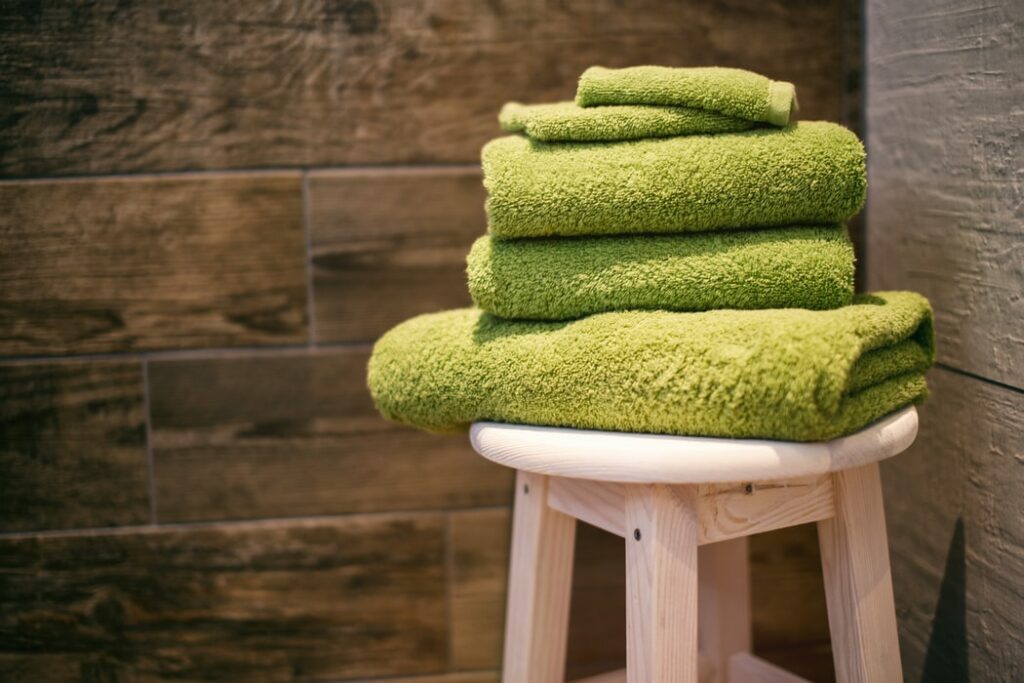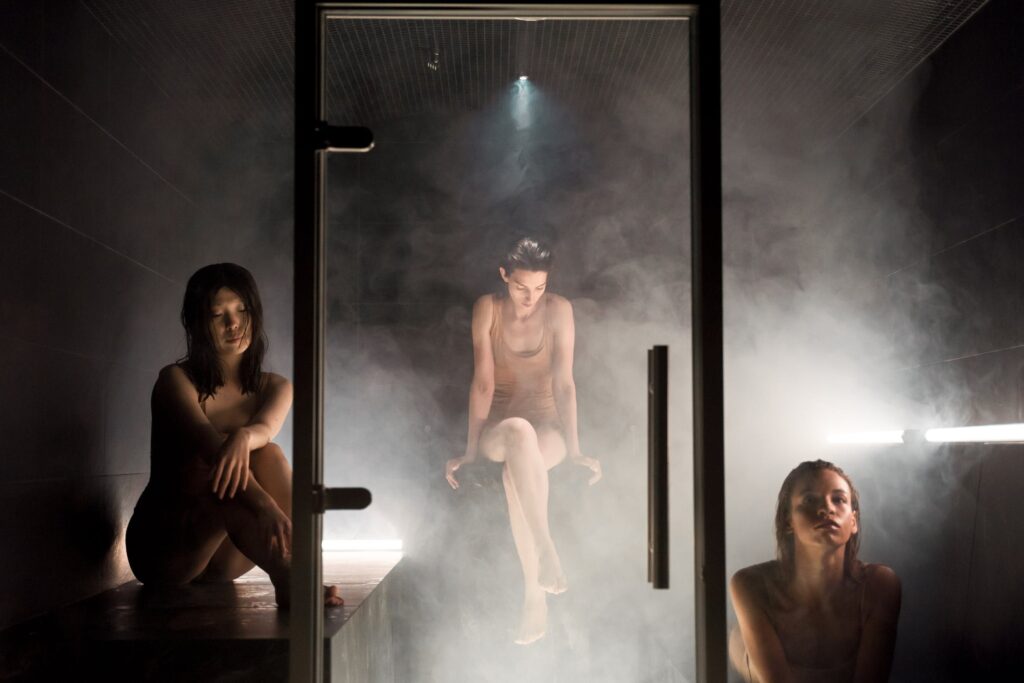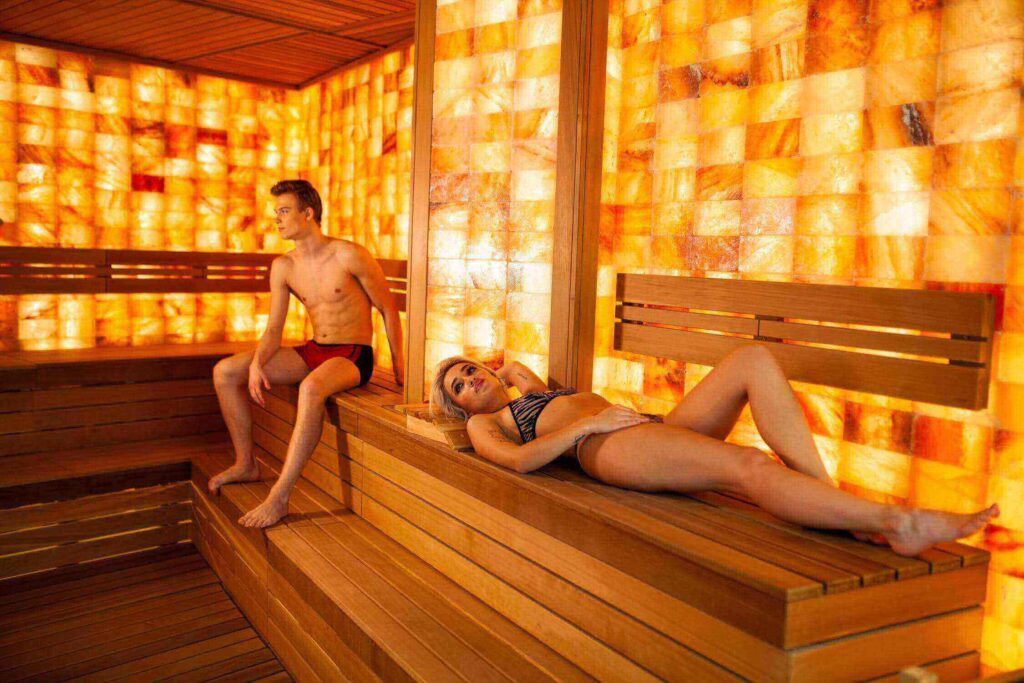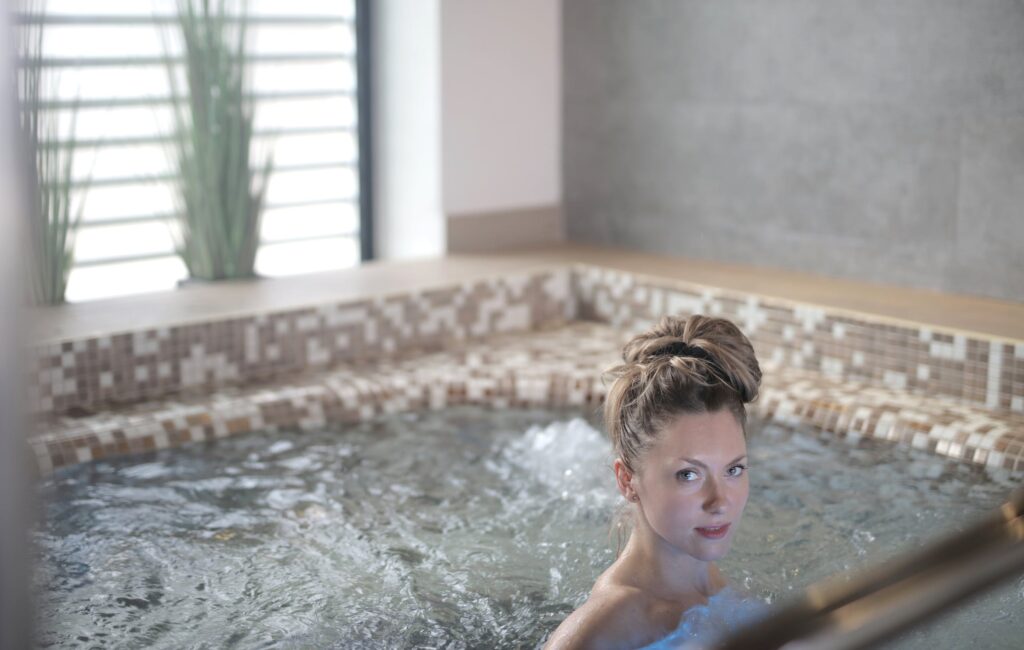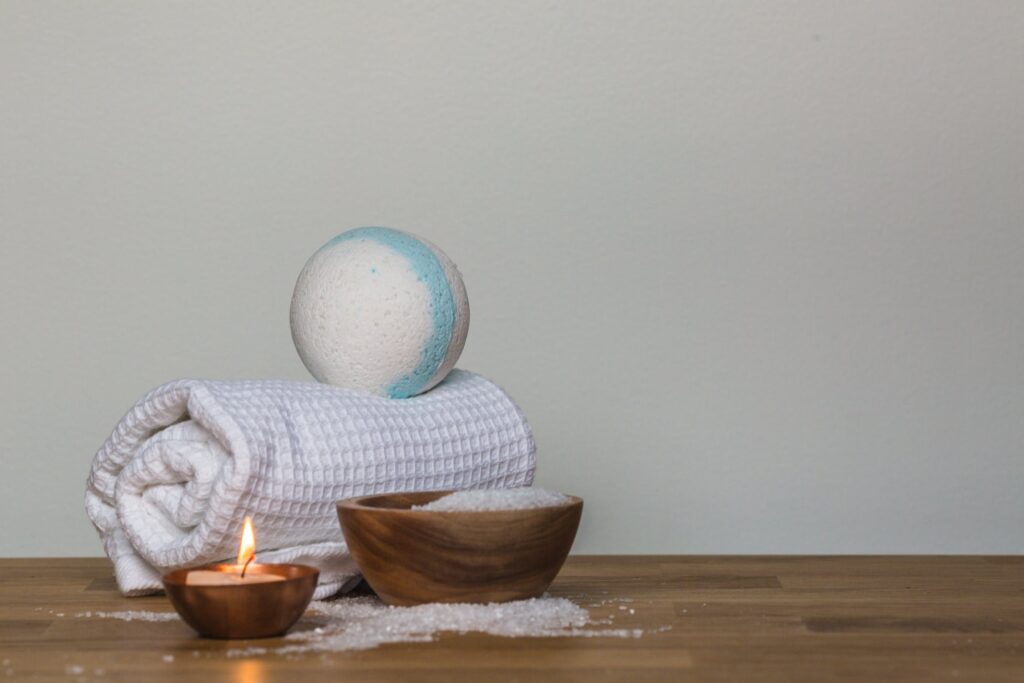Saunas are fantastic. They have the effect of calming the mind, soothing aches and pains in the muscles, and generally improving the body. Because saunas have had such a significant impact on our everyday lives, we frequently find ourselves wondering, "Who created the sauna?"
Due to the fact that saunas have been around for thousands of years, the response to this crucial topic is not crystal apparent. This subject is going to be broken down and analyzed in this essay, as well as the past of saunas, and who exactly invented them.
Sauna History
The usage of saunas may be traced back thousands of years and is prevalent in a variety of cultures. As their use extended around the world, they gained popularity due to the mental, physical, and social benefits they provided. However, tracing its expansion back to its beginning has proven to be an extremely challenging endeavor. This is due to the fact that they were developed such a significant amount of time ago and utilized by such a variety of various societies.
The only term in the Finnish language to be included in the English lexicon, SAUNA can be pronounced "sow (rhymes with wow!) Nah." Its meanings include "bath" and "bathhouse." Since it was first developed in Finland over two thousand years ago, the sauna has been an integral part of the culture there. In the year 1112, one of the earliest descriptions of the Finnish sauna was written down. The first known sauna was a hole that had been dug into the side of a hill.
In later times, saunas were constructed above ground using logs made of wood. The rocks were brought to an extremely high temperature in a stone oven by using a wood fire to heat the rocks. There was not a chimney in this chamber; rather, there was a little air vent in the back wall. During the time that the chamber was being heated, the smoke was permitted to fill the space. The process of heating a room of this type took around a half day. After the smoke had cleared, the bathers entered the sauna once it had achieved the desired temperature. The room's walls and ceiling turned into a pitch-black color. The original Finnish name for the sauna was "save," which literally translates to "smoke."
It is believed that the phrase savuna, which can be translated as "in smoke," is where the name Sauna came from. Eventually, a more conventional metal wood-burning stove complete with a chimney was incorporated into the design of the sauna. The Finnish people took their traditional bathing practice, the sauna, with them everywhere they went. The first people to bring it to the continent were Finns who arrived in 1638 and established themselves in what is now the state of Delaware. The sauna was reborn in the modern era thanks to the invention of electricity. After the electric sauna stove was introduced in the 1950s, people in the United States were able to have easier access to saunas. Some lucky Americans who lived in close proximity to Scandinavian societies may have had the opportunity to learn about saunas at an early stage in their development.
After 360 years of existence in our country, the tradition of going to the sauna has become ingrained in the lives of many Americans, just as it has for the people of Finland.
Having said all of that, the majority of historians arrive at the same opinion regarding the location where these saunas were first developed. As a consequence of this, in their point of view, the people of Finland are the most likely ones to have invented the sauna. This is due to the fact that taking a sauna is considered to be a very significant part of everyday life in Finland. This can be demonstrated in a more precise way by analyzing a common expression in Finnish: "saunas ollaan kuin kirkossa," which translates to "one should act in the sauna as they would in church."
As can clearly be seen, taking a dip in the sauna is not a straightforward exercise for Finns. Instead, you should view it as a spiritual experience, which requires you to do so with love and reverence. This argument is given a further boost by the fact that Finland is home to some of the earliest saunas that have ever been documented. Pits dug into the ground served as the basis for the construction of these saunas. As a result of the high temperatures they generated, they were utilized to an extreme degree throughout the wintertime.
Japan, China, Sweden, Guatemala, and Mexico are just few of the other areas in the world where saunas have been popular. Nearly all of these establishments included their own unique take on the traditional sauna. Even though they were slightly different from one another, they were all designed to make you sweat in order to accomplish the same thing.
The history of the Finnish sauna is long and illustrious, and becoming familiar with some of the customs and practices that it upholds is only going to make your time spent in the sauna more enjoyable for you.
The word "sauna" is pronounced "sow-nah" and rhymes with "wow."
It appears that the Finnish word "sauna," which can refer to either a bath or a bathhouse, is the only Finnish term that has made its way into the English language.
There is no denying the fact that the sauna as an institution has made its way into the tradition and way of life in the UK.
Everyone who has ever been in a sauna will definitely remember the feeling of heat that seems to sink all the way down to your bones, the incredible sense of wellbeing that comes from being in such a purification space, the smell of cedar, and the burst of sweat that appears on your skin when water is first thrown onto the rocks. These are all things that will stick in your mind long after you have left the sauna.
It should come as no surprise that taking a soak in a sauna, which offers a one-of-a-kind experience all on its own, has been a favorite pastime for more than a thousand years.
In the dim recesses of the past...
The Finns were historically a nomadic people, and it's likely that the first "sauna" was far more similar to a native North American sweat lodge than anything else. Inside the tent, a fire would be used to give heat, and water would be used to provide "loyly," which is a burst of vapor that is both cleansing and purifying. The tent would be made out of skins and hides.
During ancient times, even the most basic conditions, such as being warm and clean, were so uncommon that even the simplest of these states undoubtedly acquired a great deal of value.
The Finnish people eventually stopped wandering and began to settle down, and this coincided with the beginning of the Sauna's transition into something more regulated and permanent.
The original permanent sauna was probably nothing more than a hole excavated in the ground that contained a fire and was covered with covering or twigs, but it quickly evolved into a more permanent installation, and as its significance rose, so did its stability.
The next step in the development of the sauna was an enclosed room with a fire warming a pile of rocks. This was known as the "Sauna." After the fire had been out and the smoke had dissipated, the heat that had been retained in the stones would keep the sauna toasty for several hours.
For hundreds of years, this particular style of sauna was the standard, and it was during this time that the majority of the original traditions and beliefs associated with saunas were created.
"The sauna is like a medicine for those without much money."
The heat, humidity, and, of course, the smoke that was traditionally present in a Finnish sauna cabin all contributed to the creation of an atmosphere that was clean, purifying, and restorative.
When a Finnish farmer would come in from his fields in the evening, he would step into the sauna – which, it must be said, he occasionally used for drying his malts and smoking his meats – and the heat would rest his muscles and comfort his soul.
The purifying rite that women went through prior to getting married took place in the sauna, which was also the area where babies were born. There was no other location that was either cleaner or more purifying.
There is an old saying in Finland that goes as follows: "If tar, vodka, or the sauna won't help, then the disease is terminal." In this particular instance, the term "tar" referred to the distillations of pine sap that were utilized as an antibacterial. It is very obvious that a great deal of faith is placed in the curative capabilities of the sauna.
Because the sauna was considered to be of such great importance and holiness in Finnish culture, there is another proverb that states, "In the sauna, one must conduct themselves as one would in church."
In today's modern world, there are numerous claims that are made regarding the beneficial effects that a sauna can have on one's health, and some of these claims may be difficult to prove. Nevertheless, there is no denying the fact that there are few few activities that can match a sauna's capacity to relieve the pains of the body as well as the stresses of the mind.
Finland has a population of just over 5,000,000 people, but they have an amazing 3 million saunas to share between them. This is far more than the number of cars that they have, and "Finnish saunas" are now found in gyms and spa services almost everywhere on Earth.
It is unknown precisely where the first saunas were constructed, but historians believe they were established in northern Europe around 2,000 BC. Even in modern times, it continues to play a significant role in the cultural life of a number of countries, such as Latvia, Estonia, Russia, and Finland.
Over two thousand years ago, the Finns came up with the idea for the sauna. Bathing was the original intention behind the construction of saunas, and many people still do so today. It was thought to be a sterile environment, and it was used as a place to purifies the body in the sauna. In point of fact, in Finland it was common practice for women to give birth while in the sauna.
Traditionally, the structures that housed the saunas were made of logs, and a central fire was used to heat the rocks. In contrast to contemporary sauna rooms, the Smoke Sauna featured only a tiny hole in the wall rather than a chimney. Because of this, the interiors of the first saunas were filled with a heavy amount of smoke. The sauna room was warmed for approximately half a day before use and once it was ready, it was capable of providing heat for a period of up to twelve hours. One can only image the interior of the sauna room to be covered with black ash along the walls and to have a strong odor of smoke; this is not exactly what one would expect from a modern sauna. "Save saunas" and "smoke saunas" are the names given to the very first kind of saunas. The Finnish employed hot stones as their source of latent heat, and then water was poured over the stones to generate steam, which quickly elevated the apparent temperature within the sauna. Loyly, which literally translates to "sauna heat," is the Finnish word for this type of steam.
In order to give a way for the smoke to escape, metal chimneys were installed to saunas just as the industrialization was beginning to gain momentum. In the end, the evolution of the wood-fired sauna heater resulted in the creation of a method for combining the intense heat of the fire with a substantial bed of stones that surrounded the sauna heater. Because it has the ability to give an endless supply of heat and Loyle, the wood-fired sauna heater continues to be the preferred option for contemporary outdoor saunas.
1938 was the year that saw the introduction of the first electric sauna heater, which utilized an element similar to that of a conventional electric stove. When compared to a heater that uses fried wood, the Electric Sauna Heater offers a means of managing the temperature at a level that is significantly more precise. It also gives the convenience of allowing customers to quickly preheat the sauna without the need to light a fire, which is a time-saving feature. The invention of the electric heater marked the beginning of the popularity of indoor sauna rooms because it made it possible for households to have their very own saunas without the need of chimneys or flames. It is now common knowledge that Finland has a greater number of saunas than it does automobiles. This is because indoor saunas have been increasingly common since the invention of the electric sauna heater, which is largely responsible for their rising popularity.
Although there have been advancements in the ways in which a sauna can be heated, the advantages of using a sauna have not changed. The sauna is the only room in the house that has both a high temperature and a low humidity level. The dampness that results from adding water to the saunas is what gives a "wet sauna" its name. When there is no water present, the sauna is referred to as a "dry sauna." There is no difference in the way a dry or wet sauna is built from the ground up. The only significant distinction is the level of humidity that individual bathers desire.
Today, saunas are enjoyed all over the world and are widely recognized for the relaxing effects they provide as well as their capacity to alleviate tension. In addition, there is abundant evidence that demonstrates the positive effects on one's health, making this an excellent strategy for enhancing one's general well-being. A home sauna room is another example of a home improvement project that is seen as a good investment, just like remodeling the kitchen or bathroom.
People in various countries enjoy arguing over who has the finest saunas at the moment, but the reality is that their construction practices and traditions have developed mainly simultaneously over the course of the last few thousand years. However, as a native Estonian, I will subsequently provide an explanation that is, to some extent, skewed by my own perspective of what makes saunas in Estonia unique and noteworthy.
It's possible that the vast majority of individuals who use saunas now are unaware of how extensive the history of saunas actually is. In point of fact, it begins below ground, when the very first saunas were constructed — not for the purpose of leisure, but rather for the purpose of survival.
FAQs About Sauna
Take a warm shower just before your sauna session so you don't bring any dirt in. It also helps to open your pores and relax your muscles. But remember to dry completely off to sweat more quickly.
Best Times for infrared sauna sessions are early in the morning or before bedtime in the evening, although anytime is good. When you first begin to use your infrared sauna, Start Slowly. After you begin to break a sweat, a 20 -30 minute session is recommended.
It is a good idea to reapply the moisturizer after the sauna, when you have showered and your skin is still damp. Don't forget the hair.
Contraindications to sauna bathing include unstable angina pectoris, recent myocardial infarction, and severe aortic stenosis. Sauna bathing is safe, however, for most people with coronary heart disease with stable angina pectoris or old myocardial infarction.
Saunas are excellent for relaxation and relieving tense muscles. Meanwhile, steam rooms have further benefits from the moist heat and humidity such as skin moisturizing, congestion relief, and reduced muscle soreness.
The Ancient Saunas
Caves dug out by humans, lined on the inside with animal hides, and lit from within by a fire hidden beneath a heap of stones served as the ancestors of modern-day saunas. After the fire was put out and the smoke cleared away, the stones would continue to warm the cave well into the night for the persons (and sometimes animals) who huddled inside and basked in the vapour that rose from the stones when water was poured on them. This would happen even after the fire had been put out and the smoke had cleared away.
The smoke from the fire not only heated these rooms, but it also sanitized and disinfected them. As a consequence of this, they were necessary for maintaining daily living in an environment that was unforgiving. Throughout the course of the year, these early saunas served a variety of purposes, including as kitchens, restrooms, hospitals, and more; nevertheless, during the hard winters, they were literally the only area to reside. The Sauna was the area where people gave birth, where their bodies were laid out when their lives came to an end, and where all of the most significant ceremonies took place in between those two events.
As a direct consequence of this, the saunas gradually evolved into holy sites that were deeply entwined with various spiritual beliefs and formed their very own unique traditions. They were thought to give magical abilities on whoever entered them, and it was also believed that they were home to a mysterious sauna spirit that was revered and dreaded in equal measure.
So Who Invented The Sauna?
It is widely held that the Finnish were the ones who invented the sauna, even though this claim has never been verified. There is a significant body of evidence that supports this notion. For example, the discovery of ancient saunas in Finland and the high regard in which the Finnish hold the sauna in their culture. Because of this, many historians and people who are passionate about saunas believe that the Finnish were the ones who invented it. We have a pretty decent idea, and there is a lot of evidence to back up our theory, but we'll probably never know for sure who was responsible.
Modern saunas
Chimneys weren't installed in northern European buildings until the onset of the industrial revolution in that region. This made it possible for saunas to maintain a consistent and rapid temperature even after people had entered them (as long as they added wood).
Although these continuously wood-fired saunas are now what the majority of people think of when they think of a sauna, the older forms of saunas without chimneys, which are now termed smoke saunas, still exist in various locales and are still thought of as the greatest.
Around the turn of the 20th century, smoke saunas started to give way to iron stoves that expelled the smoke up a chimney.
The culture of the Finnish sauna was carried with the Finns wherever they went and wherever they lived. This is due to the fact that it played such an important role in their lives.
The first electric sauna stoves were invented in the 1950s in the United States, and this technology swiftly spread throughout the rest of the world, including back to the country that was responsible for the invention of the sauna.
Electric stoves have made saunas more user-friendly and available to a wider audience. It is estimated that there are 2 million saunas in Finland, which has a total population of approximately 5 million people. Therefore, it is important to note that those who initially conceptualized the benefits of the sauna continue to remain convinced of its usefulness.
The Tylo sauna collection carries on this illustrious history of wellness and relaxation while bringing it bang up to date in terms of both its technological capabilities and its aesthetic appeal.
The rise in popularity of Finnish saunas, on the other hand, can be somewhat attributed to developments in contemporary geopolitics.
Even though they are both commemorating their 100th anniversary as independent republics at the same time, Finland and Estonia couldn't be more different in terms of the fortunes they've encountered over the course of the majority of that period. The Soviet Union conquered Estonia at this time, while Finland managed to maintain its independence.
As a consequence of this, the Finns took advantage of their increasing affluence and freedom to upgrade the traditional design of their saunas and to continue disseminating the practice across the globe amid waves of migration toward the west.
Finland is credited for inventing the first electric sauna, which was later made popular in the United States in the middle of the 20th century. Because of this, a much larger number of individuals were able to enjoy the benefits of saunas, despite the fact that they provided an apparently inferior source of heat. In addition to this, it meant that saunas could now be constructed with relative ease inside spas, gyms, and hotels all around the western world and beyond.
The fact that most customs were disregarded in saunas, while swimming attire was not one of them, contributed to the widespread perception that saunas were places of public recreation.
Electric saunas made their way back to Finland, where many of its wood-fired predecessors were eventually replaced with electric models.
Summary, we'll never know for sure who came up with the idea for the sauna. There is sufficient evidence to suggest that the Finnish invented it because it plays such a vital role in both their day-to-day lives and their culture. However, this does not prove that they were the original creators of the sauna. All that is left for us to do at this point is to offer our gratitude to whoever invented the sauna, as well as to those who have worked to improve upon it, and then to take advantage of the contemporary saunas that are available to us today.
Conclusion
Saunas have been around for thousands of years and have the effect of calming the mind, soothing aches and pains, and improving the body. The people of Finland are most likely to have invented the sauna, as it is seen as a spiritual experience and is home to some of the earliest saunas. Saunas have been around for thousands of years, and the Finnish word "sauna" is the only Finnish term that has made its way into the English language. Finnish saunas evolved from a hole excavated in the ground to a permanent installation, with the heat, humidity, and smoke creating an atmosphere that was clean, purifying, and restorative. Saunas have been around since 2,000 BC, and are now found in gyms and spa services around the world.
The wood-fired sauna heater is the preferred option for contemporary outdoor saunas due to its ability to provide an endless supply of heat and Loyle. The invention of the electric sauna heater in 1938 marked the beginning of the popularity of indoor saunas, which are now widely recognized for their relaxing effects and positive effects on health. Saunas have been around for thousands of years, originating from caves dug out by humans and lit from within by a fire hidden beneath a heap of stones. They served a variety of purposes, including as kitchens, restrooms, hospitals, and more, and were believed to give magical abilities and be home to a mysterious sauna spirit. The Finnish were the ones who invented the sauna, but it has never been verified.
Electric stoves have made it more user-friendly and available to a wider audience, and the rise in popularity of Finnish saunas can be attributed to developments in contemporary geopolitics. Finland is credited with inventing the first electric sauna, which enabled a larger number of people to enjoy its benefits.
Content Summary
- Because saunas have had such a significant impact on our everyday lives, we frequently find ourselves wondering, "Who created the sauna?"Due to the fact that saunas have been around for thousands of years, the response to this crucial topic is not crystal apparent.
- This subject is going to be broken down and analyzed in this essay, as well as the past of saunas, and who exactly invented them.
- Sauna HistoryThe usage of saunas may be traced back thousands of years and is prevalent in a variety of cultures.
- Since it was first developed in Finland over two thousand years ago, the sauna has been an integral part of the culture there.
- After 360 years of existence in our country, the tradition of going to the sauna has become ingrained in the lives of many Americans, just as it has for the people of Finland.
- As a consequence of this, in their point of view, the people of Finland are the most likely ones to have invented the sauna.
- This is due to the fact that taking a sauna is considered to be a very significant part of everyday life in Finland.
- This argument is given a further boost by the fact that Finland is home to some of the earliest saunas that have ever been documented.
- The history of the Finnish sauna is long and illustrious, and becoming familiar with some of the customs and practices that it upholds is only going to make your time spent in the sauna more enjoyable for you.
- There is no denying the fact that the sauna as an institution has made its way into the tradition and way of life in the UK.Everyone who has ever been in a sauna will definitely remember the feeling of heat that seems to sink all the way down to your bones, the incredible sense of wellbeing that comes from being in such a purification space, the smell of cedar, and the burst of sweat that appears on your skin when water is first thrown onto the rocks.
- It should come as no surprise that taking a soak in a sauna, which offers a one-of-a-kind experience all on its own, has been a favorite pastime for more than a thousand years.
- In the dim recesses of the past...The Finns were historically a nomadic people, and it's likely that the first "sauna" was far more similar to a native North American sweat lodge than anything else.
- The next step in the development of the sauna was an enclosed room with a fire warming a pile of rocks.
- This was known as the "Sauna."
- For hundreds of years, this particular style of sauna was the standard, and it was during this time that the majority of the original traditions and beliefs associated with saunas were created.
- It is very obvious that a great deal of faith is placed in the curative capabilities of the sauna.
- Because the sauna was considered to be of such great importance and holiness in Finnish culture, there is another proverb that states, "In the sauna, one must conduct themselves as one would in church."
- Nevertheless, there is no denying the fact that there are few few activities that can match a sauna's capacity to relieve the pains of the body as well as the stresses of the mind.
- Finland has a population of just over 5,000,000 people, but they have an amazing 3 million saunas to share between them.
- This is far more than the number of cars that they have, and "Finnish saunas" are now found in gyms and spa services almost everywhere on Earth.
- It is unknown precisely where the first saunas were constructed, but historians believe they were established in northern Europe around 2,000 BC.
- Over two thousand years ago, the Finns came up with the idea for the sauna.
- It was thought to be a sterile environment, and it was used as a place to purifies the body in the sauna.
- Traditionally, the structures that housed the saunas were made of logs, and a central fire was used to heat the rocks.
- In contrast to contemporary sauna rooms, the Smoke Sauna featured only a tiny hole in the wall rather than a chimney.
- Because of this, the interiors of the first saunas were filled with a heavy amount of smoke.
- Save saunas" and "smoke saunas" are the names given to the very first kind of saunas.
- In the end, the evolution of the wood-fired sauna heater resulted in the creation of a method for combining the intense heat of the fire with a substantial bed of stones that surrounded the sauna heater.
- Because it has the ability to give an endless supply of heat and Loyle, the wood-fired sauna heater continues to be the preferred option for contemporary outdoor saunas.
- 1938 was the year that saw the introduction of the first electric sauna heater, which utilized an element similar to that of a conventional electric stove.
- This is because indoor saunas have been increasingly common since the invention of the electric sauna heater, which is largely responsible for their rising popularity.
- Although there have been advancements in the ways in which a sauna can be heated, the advantages of using a sauna have not changed.
- The sauna is the only room in the house that has both a high temperature and a low humidity level.
- A home sauna room is another example of a home improvement project that is seen as a good investment, just like remodeling the kitchen or bathroom.
- People in various countries enjoy arguing over who has the finest saunas at the moment, but the reality is that their construction practices and traditions have developed mainly simultaneously over the course of the last few thousand years.
- In point of fact, it begins below ground, when the very first saunas were constructed — not for the purpose of leisure, but rather for the purpose of survival.
- As a direct consequence of this, the saunas gradually evolved into holy sites that were deeply entwined with various spiritual beliefs and formed their very own unique traditions.
- It is widely held that the Finnish were the ones who invented the sauna, even though this claim has never been verified.
- There is a significant body of evidence that supports this notion.
- For example, the discovery of ancient saunas in Finland and the high regard in which the Finnish hold the sauna in their culture.
- Because of this, many historians and people who are passionate about saunas believe that the Finnish were the ones who invented it.
- The Tylo sauna collection carries on this illustrious history of wellness and relaxation while bringing it bang up to date in terms of both its technological capabilities and its aesthetic appeal.
- Even though they are both commemorating their 100th anniversary as independent republics at the same time, Finland and Estonia couldn't be more different in terms of the fortunes they've encountered over the course of the majority of that period.
- The Soviet Union conquered Estonia at this time, while Finland managed to maintain its independence.
- As a consequence of this, the Finns took advantage of their increasing affluence and freedom to upgrade the traditional design of their saunas and to continue disseminating the practice across the globe amid waves of migration toward the west.
- Finland is credited for inventing the first electric sauna, which was later made popular in the United States in the middle of the 20th century.
- In addition to this, it meant that saunas could now be constructed with relative ease inside spas, gyms, and hotels all around the western world and beyond.
- Summary, we'll never know for sure who came up with the idea for the sauna.
- There is sufficient evidence to suggest that the Finnish invented it because it plays such a vital role in both their day-to-day lives and their culture.
- However, this does not prove that they were the original creators of the sauna.

